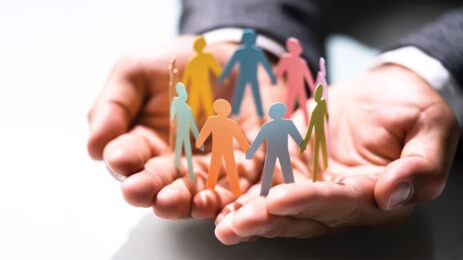You have finally mastered the seeming magic of using Bluetooth technology to transfer files between your devices and stream music to speakers without wires or cables. Now, get ready for a Bluetooth Low Energy (BLE) evolution. Greg Lazzaro, president and founder of TRC Solutions, a badge-printing and attendance-tracking company in Princeton Junction, New Jersey, says BLE is big news for planners. It promises to expand the range of things planners can do to improve attendee experiences and improve event metrics.
“It gives the planner insight into attendee behavior they haven’t had in the past,” Lazzaro says. We asked him to elaborate.
How can a technology that is remarkable because of its limited power consumption perform this marketing black magic?
Like traditional Bluetooth, BLE—or Bluetooth 4.0, as it was originally known—is a wireless technology standard that breaks data into chunks, and then sends it through designated airwave channels. When you need to transfer a lot of information—think phone calls or music—Bluetooth does a great job, but it can drain a battery quickly and be costly. BLE is designed for when you only occasionally need to transmit information, which uses less battery and costs less to run.
What does this mean for event professionals?
You can now afford to digitally “fence” an entire area and scan where individual and swaths of attendees are spending their time. This allows for “proximity marketing”—interacting with wearers based on where they actually are at any given moment. The result is a treasure trove of information in real time. You can know exactly when attendees are in sessions, and make better programming decisions (and changes) on the fly. BLE also plays well with most badge registration software, as was tested at IMEX America in Las Vegas in October.
How is that good for attendees?
Information about capacity at sessions or lunch lines can be sent to smartphone applications, enabling attendees to know whether a seat will be available and the best time to step out to make a call or for a bite to eat. When merged with other apps, attendees can ask for a slide deck or complete a survey, all without leaving their seats. “This allows planners to really personalize the experience,” Lazzaro says.
Why not just continue to use RFID?
Radio frequency identification (RFID) can determine when an attendee enters a “space of scanability,” but that is where similarity ends, according to Lazzaro. BLE captures a larger radius, allowing planners to track not only when, but also how attendees arrived. “They didn’t just fall out of the sky. There is value in knowing their journey to a given point,” he says. In short, BLE offers more touch points and more data.
How expensive will it be to adopt BLE?
Lazzaro says low cost of entry is one of its advantages. Most applications will not require a planner to purchase additional internet or any other hardware. “It is self-contained,” he explains.
When will BLE be a household name?
BLE has become much more practical to implement. Until recently, the greatest barrier to adoption was the cost of wearable beacons for attendee badges. Those costs have come down, and the technology has been refined to fix “bleed areas”—which resulted in accidental capture in the past. “The barriers have been overcome, and 2019 will be the year BLE goes mainstream,” Lazzaro predicts.
What can we expect from BLE in the future?
Eventually, attendees will be able to navigate an event and track proximity to each other using personal devices. Most smartphones already have the technology built in. Embracing the interactive tool is just a matter of asking the right questions and finding the right data analytics partner to tease out the trends in all that new information.




